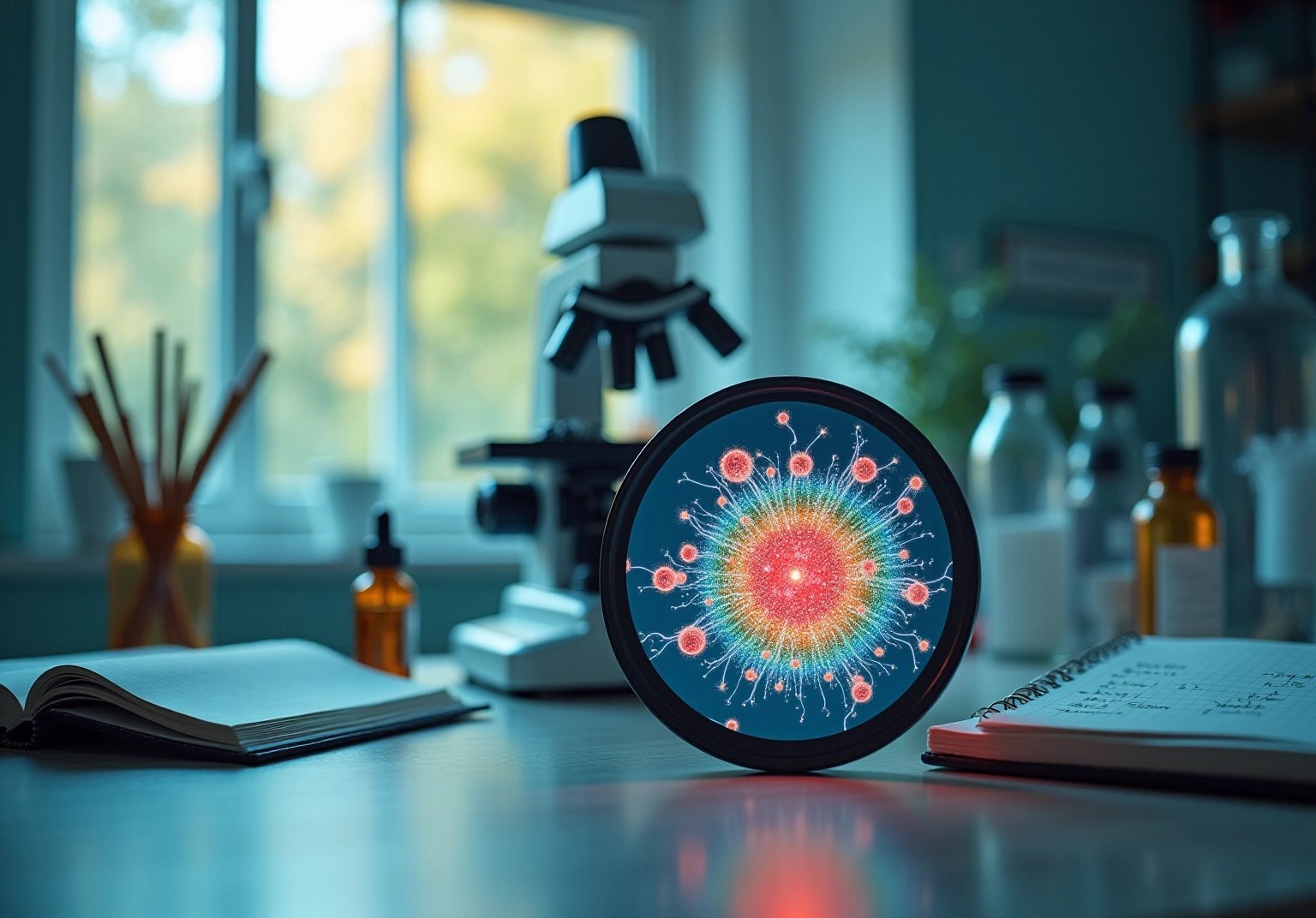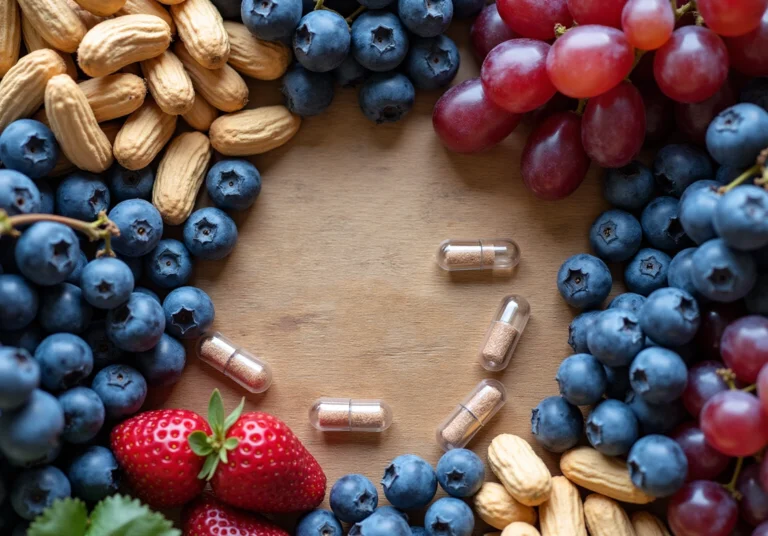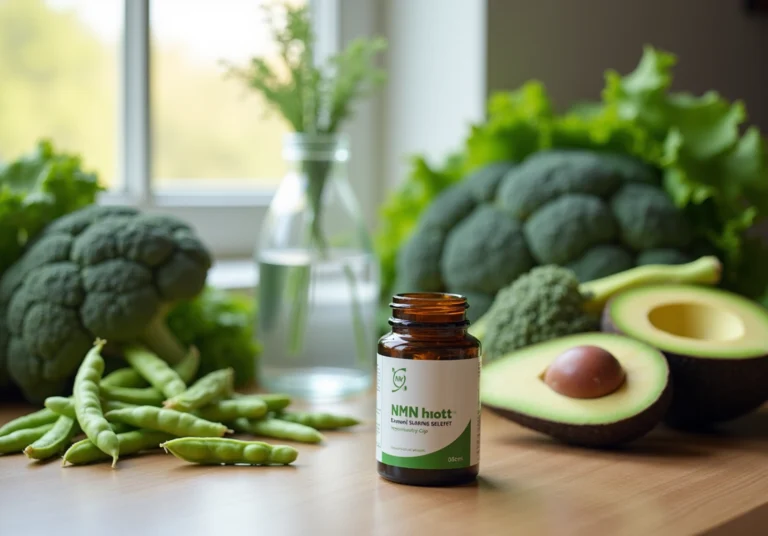NAD Levels by Age: Comparing Young Adults and Seniors
Overview
The article highlights the decline of NAD (nicotinamide adenine dinucleotide) levels as a person ages. Research indicates a significant reduction from young adulthood to senior years, with NAD levels decreasing by 40-50% by age 50 and potentially dropping to as low as 1-10% of youthful levels by age 80. This decline is linked to various age-related health issues, underscoring the importance of maintaining NAD for healthy aging. Furthermore, potential interventions to boost NAD levels may offer promising benefits for overall health as we age.
Introduction
Nicotinamide adenine dinucleotide (NAD) is a vital coenzyme that plays a crucial role in energy production, DNA repair, and cellular metabolism. However, as individuals age, their NAD levels can plummet by as much as 90%, leading to a range of health issues that compromise vitality and longevity.
This stark contrast in NAD levels between young adults and seniors raises important questions about the implications of this decline. What can be done to mitigate the effects of aging on NAD levels? Furthermore, how might lifestyle changes play a pivotal role in enhancing overall health?
This article explores potential interventions that may help restore these essential coenzyme concentrations.
Understanding NAD: Importance and Function in Aging
Nicotinamide adenine dinucleotide (NAD) is an essential coenzyme found in every cell, integral to numerous biological processes. It exists in two forms: one oxidized and the other as NADH (reduced). Both forms are crucial for redox reactions that transform nutrients into energy. NAD plays a significant role in DNA repair and the regulation of cellular metabolism, facilitating critical metabolic reactions necessary for life.
As people age, studies show that NAD levels by age decrease, which is associated with several age-related issues. These include:
- Diminished energy production
- Impaired cellular repair processes
- Increased oxidative stress
Research indicates that NAD levels by age 50 generally experience a reduction of 40-50% in individuals compared to their young adult condition. By age 80, the NAD levels by age could decline to as low as 1-10% of youthful figures. This decline can lead to diminished mitochondrial function and increased susceptibility to metabolic disorders.
Understanding the complex roles of NAD highlights the importance of sustaining optimal levels to promote healthy aging and longevity. Moreover, incorporating supplements such as NMN can boost NAD levels. TMG serves a complementary function by providing essential methyl groups, ensuring that NMN is effectively utilized by the cells. This synergy is particularly significant in anti-aging therapies, as it supports cellular function and overall health during the aging process.
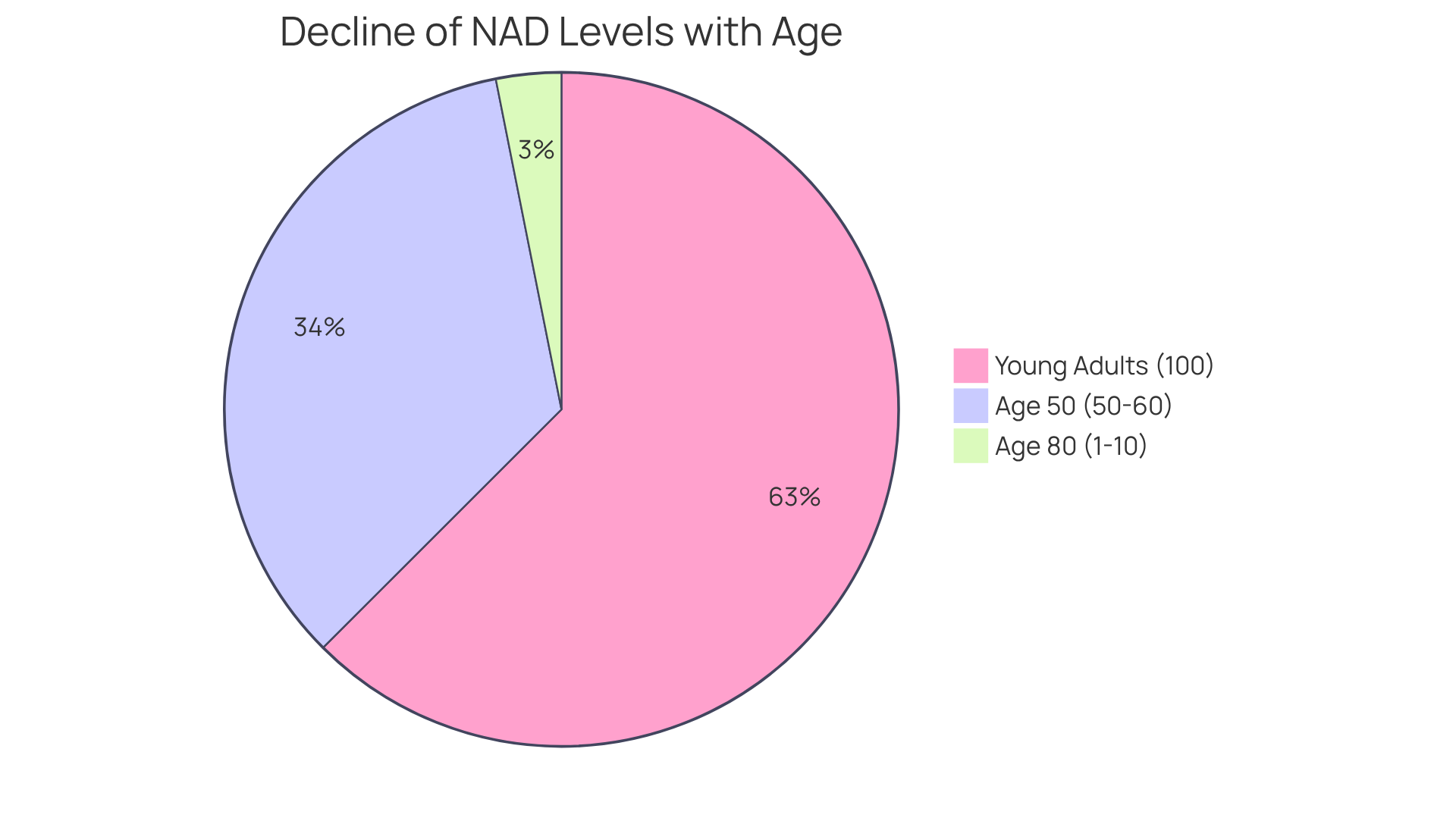
Comparing NAD Levels: Young Adults vs. Seniors
Studies indicate that NAD levels by age peak in early adulthood, typically in the early 20s, before beginning a gradual decline. By the age of 50, individuals may experience a reduction of 40-50% in cellular energy molecules, reflecting the NAD levels by age compared to their youthful state. In older adults, particularly those over 80, NAD levels by age can decrease to as low as 1-10% of youthful amounts. This reduction is linked to various aging-related issues, including decreased energy, impaired cellular repair mechanisms, and increased susceptibility to age-related diseases.
Significantly, research shows that the decline in NAD is not uniform across all tissues; specific regions exhibit more pronounced reductions than others. Moreover, physically impaired older adults tend to have even lower NAD concentrations than those with normal physical fitness, underscoring the importance of maintaining physical activity. Studies reveal a direct correlation between daily step count and muscle NAD content, suggesting that lifestyle choices play a crucial role in NAD levels.
Furthermore, innovative anti-aging strategies, such as those explored in Dr. Dituri’s underwater research, indicate that prolonged underwater living combined with lifestyle interventions could enhance health and longevity. Testimonials from participants in these studies highlight the beneficial effects of underwater living on overall well-being. This gap underscores the urgent need for strategies aimed at restoring coenzyme concentrations in older individuals, potentially alleviating some of the adverse effects associated with aging.
Future studies may explore the potential of substances like rapamycin, which influence cellular functions related to aging, to further enhance nicotinamide adenine dinucleotide concentrations and overall well-being in the elderly population.
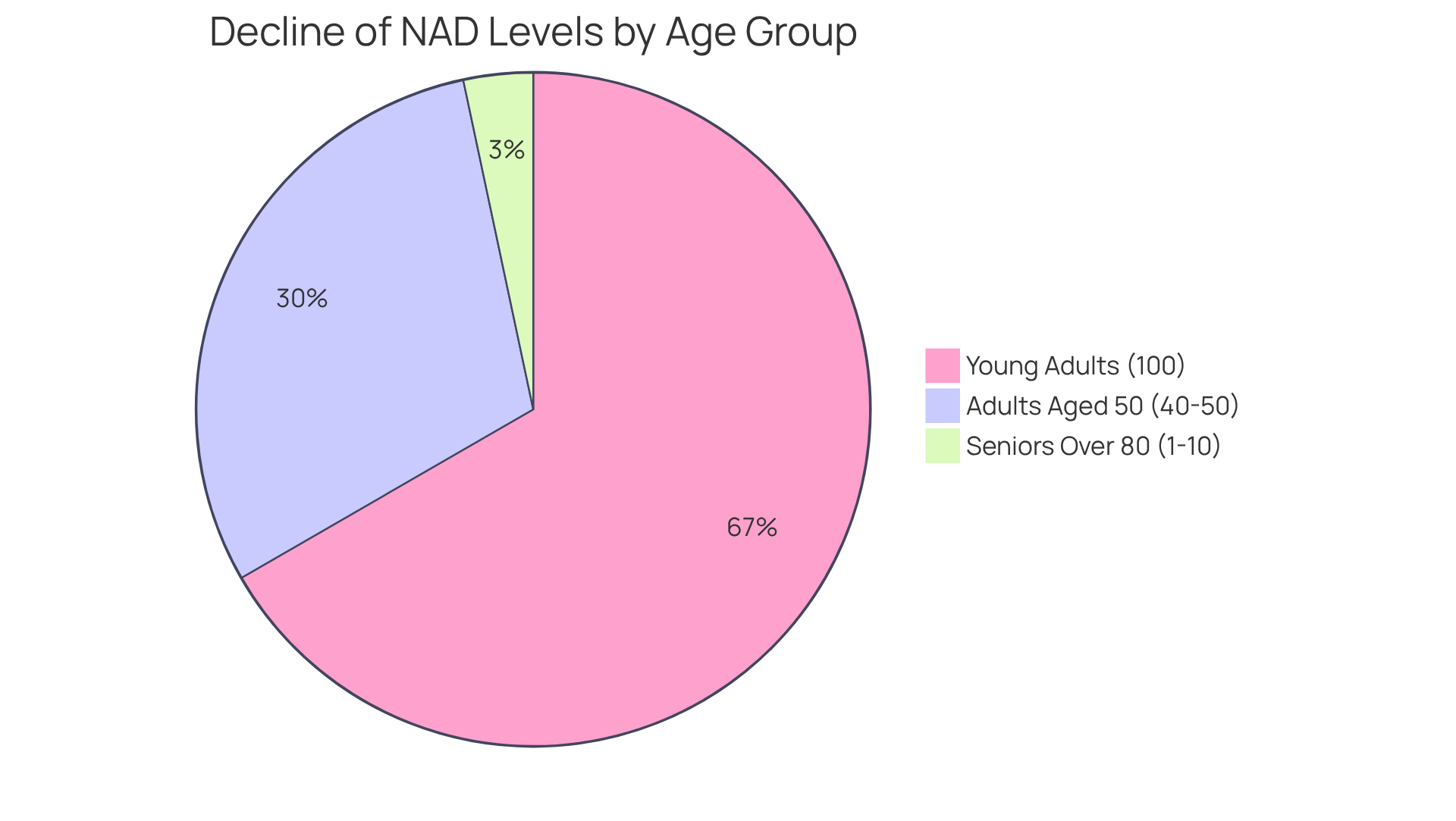
Factors Influencing NAD Levels Across Age Groups
Numerous factors influence NAD levels by age across different age groups, including diet, physical activity, and overall health. Young adults typically exhibit higher NAD levels by age due to a more active lifestyle and a nutrient-dense diet that promotes NAD production, particularly through niacin and tryptophan. In contrast, older adults often experience a decline in physical activity and may face nutritional shortfalls, which can lead to reduced NAD levels by age. Furthermore, chronic health issues common among seniors, such as obesity and diabetes, can exacerbate the decline in NAD levels by age.
Recent research suggests that lifestyle changes, including regular physical activity and a nutrient-rich diet, may help enhance NAD levels by age, potentially reversing some declines related to aging. For instance, incorporating high-quality protein sources, such as ribeye steaks, into your diet can be advantageous. Preparing these steaks using techniques like searing and basting in grass-fed butter not only elevates flavor but also ensures a nutritious meal that supports overall health and longevity. By making these dietary adjustments, individuals can take proactive steps toward improving their NAD levels and overall well-being.
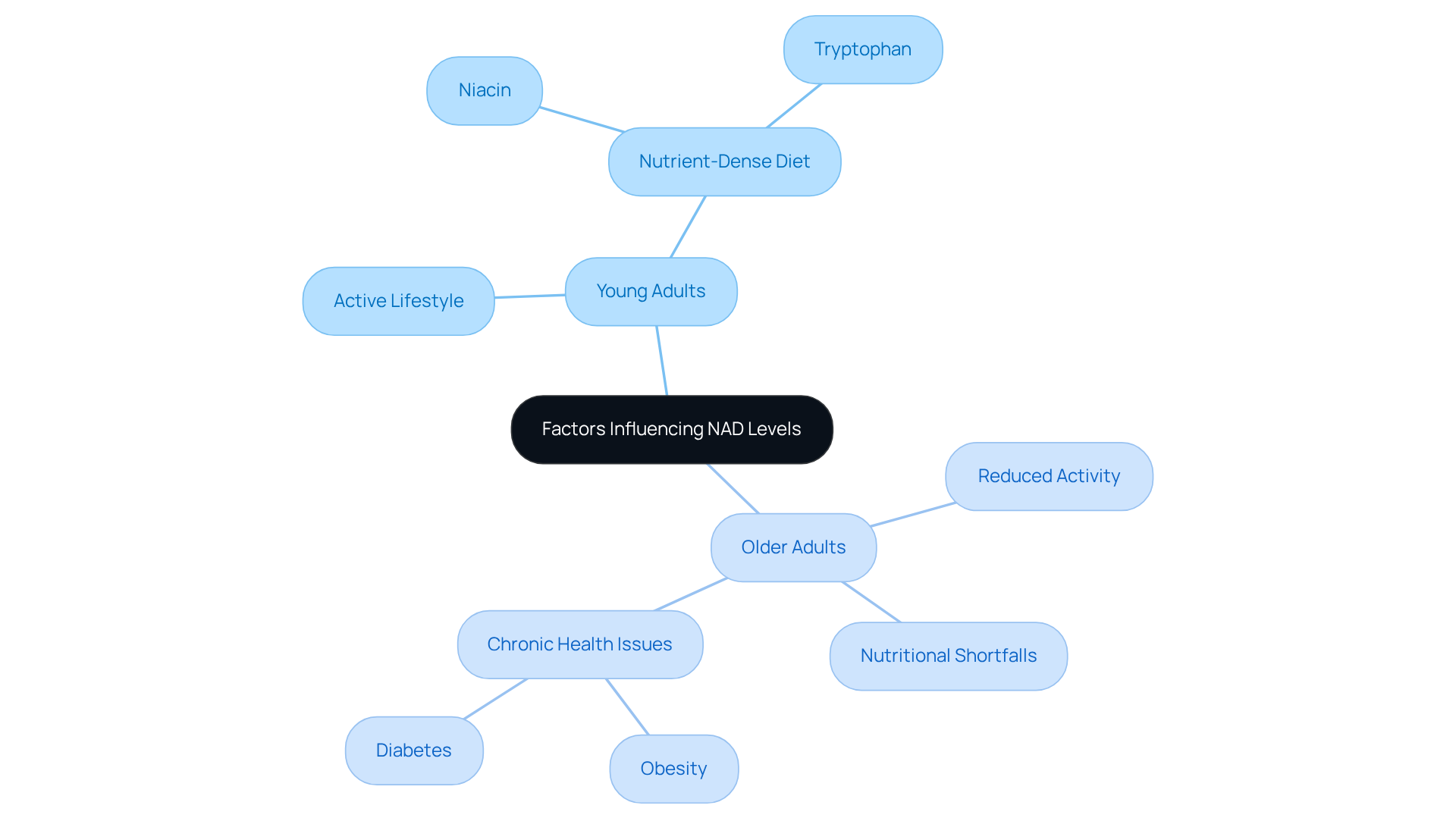
Potential Interventions to Boost NAD Levels
To counteract the reduction in NAD levels by age that accompanies aging, several interventions have emerged as promising alternatives. Studies indicate that NAD levels by age can decline by 10%-80%, highlighting the importance of boosting NAD concentrations. Dietary supplements such as nicotinamide riboside (NR) and nicotinamide mononucleotide (NMN) are currently being researched for their potential to enhance NAD concentrations. Research has demonstrated that NMN intake can improve sleep quality and maintain walking speed in older adults, potentially alleviating age-related declines in cellular function.
In addition to supplementation, incorporating niacin-rich foods—such as high-quality animal-based options like meat and fish—can further support NAD synthesis. This reflects the dietary practices of longevity-focused cultures, such as the Hunza. Furthermore, consistent physical activity is crucial; studies have shown that exercise significantly increases levels of certain coenzymes in skeletal muscle, thereby enhancing overall metabolic health.
However, it is essential to be cautious, as high doses of niacin and nicotinamide can lead to adverse effects. Additionally, NAD upregulation may exacerbate the senescence-associated secretory phenotype (SASP) in aging tissues. Innovative therapies targeting NAD metabolism, including NAD+ precursors, are being explored in clinical settings to assess their effectiveness in promoting healthy aging. Although clinical trials have yielded mixed results regarding the impact of nicotinamide mononucleotide on physiological outcomes, these multifaceted approaches offer hope for individuals seeking to sustain vitality and well-being as they age.
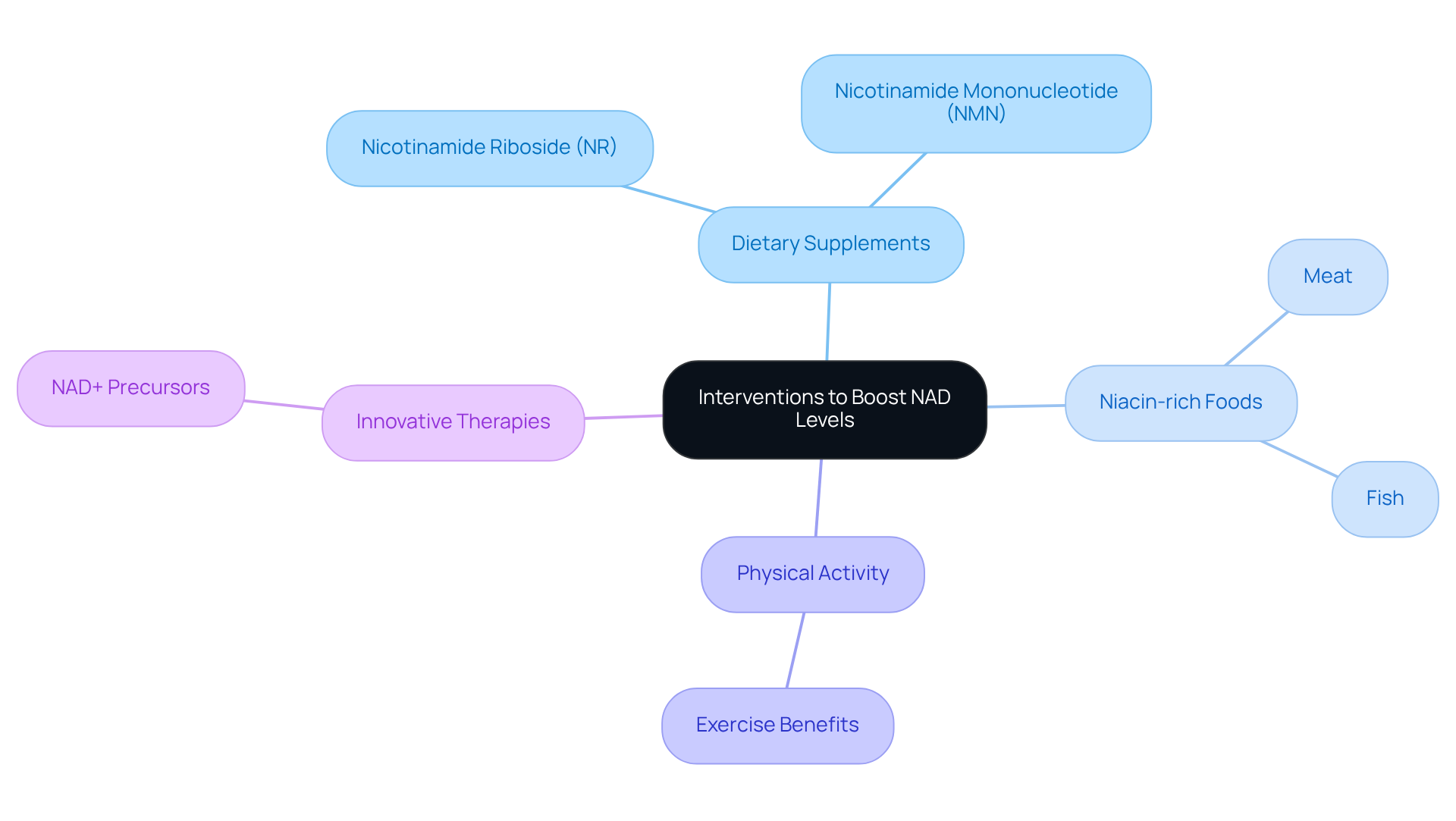
Conclusion
Nicotinamide adenine dinucleotide (NAD) is a vital coenzyme that plays a crucial role in energy production, DNA repair, and cellular metabolism. As individuals age, NAD levels decline significantly, leading to various age-related health issues. Understanding the differences in NAD levels between young adults and seniors highlights the importance of maintaining optimal NAD concentrations for healthy aging.
Throughout this article, we have discussed key insights, including:
- How NAD levels peak in early adulthood and can decline by 40-50% by age 50.
- NAD levels can decline even further to 1-10% by age 80.
- Factors such as physical activity, diet, and chronic health issues contribute to this decline.
- Lifestyle choices, including regular exercise and a nutrient-rich diet, can help mitigate these reductions.
- Supplements like NMN and NR show promise in boosting NAD levels.
Ultimately, the significance of sustaining NAD levels cannot be overstated. By adopting proactive strategies such as dietary improvements and incorporating physical activity, individuals can take meaningful steps toward enhancing their well-being as they age. Emphasizing the importance of NAD in combating age-related decline serves as a powerful reminder of the potential for healthier aging through informed lifestyle choices and emerging therapeutic interventions.
Frequently Asked Questions
What is NAD and why is it important?
Nicotinamide adenine dinucleotide (NAD) is an essential coenzyme found in every cell that plays a crucial role in numerous biological processes, including energy production, DNA repair, and the regulation of cellular metabolism.
In what forms does NAD exist?
NAD exists in two forms: oxidized (NAD) and reduced (NADH). Both forms are important for redox reactions that convert nutrients into energy.
How does aging affect NAD levels?
As people age, NAD levels decrease. Research shows that by age 50, NAD levels can drop by 40-50% compared to young adulthood, and by age 80, they may decline to as low as 1-10% of youthful levels.
What are the consequences of reduced NAD levels in aging?
Reduced NAD levels are associated with several age-related issues, including diminished energy production, impaired cellular repair processes, and increased oxidative stress, which can lead to diminished mitochondrial function and greater susceptibility to metabolic disorders.
How can NAD levels be boosted?
NAD levels can be boosted by incorporating supplements such as NMN (Nicotinamide Mononucleotide). Additionally, TMG (Trimethylglycine) can provide essential methyl groups that help ensure NMN is effectively utilized by the cells.
Why is it important to sustain optimal NAD levels?
Sustaining optimal NAD levels is important for promoting healthy aging and longevity, as it supports critical metabolic reactions necessary for life and overall cellular function.
